Preamble: The Primeurs 2024 tasting resulted in wide variations in scores between journalists and critics, but also between critics! Having read some of the results, we felt it essential to explain our favorable assessment of the 2024 vintage to remove any ambiguity about our benevolence towards the châteaux. After all, La Tulipe Rouge is one of the few wine critics, if not the only one, to be totally independent! So our enthusiasm for Primeurs 2024 is genuine! Enjoy your reading.
“To begin with, I must ask you to broaden your acceptance of the word ‘art’ beyond explicit works of art, to include not only painting, sculpture, and architecture, but also the forms and colors of all domestic goods, even the arrangement of fields for plowing and pasture, the maintenance of cities, our roads and paths; in short, to extend it to all the outward aspects of our lives. […] What then of our current living environment? What kind of assessment will we be able to make, for those who come after us, of our dealings with the Earth, which was still beautiful when our ancestors handed it down to us, despite millennia of conflict, neglect, and selfishness? […] How, in recent years, have we treated the beauty of the Earth, or what we call art?” Art and Craft, 1889
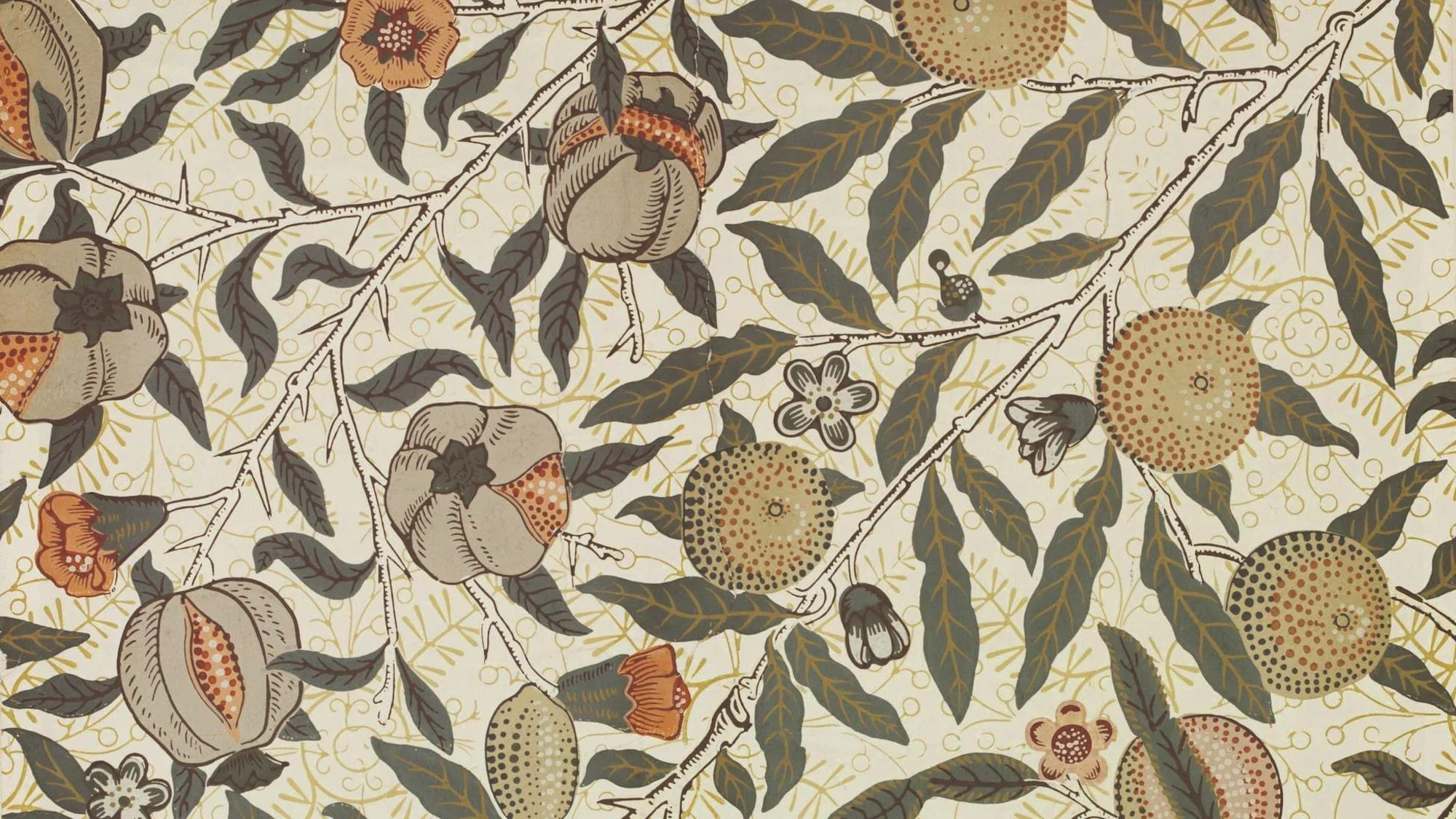
Dating from 1865–1866, "Fruits" is a wallpaper by Morris & Co. Victoria and Albert Museum, London
In this text, William Morris, designer and “inspirer” of the Arts and Crafts movement, establishes the equivalence of “major” and “minor” arts: artists and artisans are called upon to collaborate in the creation of a new world. The project must be total, or it will not be at all. To care about where we work is to care about what, in turn, shapes us. “Know-how and design matter as much as the finished object,” Guillaume Logé reminds us with clarity. Let us be clear: not less, not more, but “as much.” That is, an aesthetic of gesture as a force of manifestation and transformation, not of anthropocentric domination disconnected from the world. This aesthetic-of gesture, and more broadly, of the collaboration of all disciplines involved in a project-has permeated the hearts and cellars of the Bordeaux vineyards. The 2024 vintage is proof, accomplished with style. A vintage beautiful in its result, aesthetic in its conception, conveying the essence of dignified and existential work for all vineyard stakeholders. We sensed this paradigm shift during the tasting of the “comfortable” 2022 deliverables (see The Renaissance of wine runs through Bordeaux). What we lacked was a true test… We could not have asked for so much! Nor could the winemakers! Let us look back at this “sleeper vintage,” born in the shadow of the superlative 2022 and 2023, but reminiscent of the great Bordeaux wines of the 1980s and 1990s, with the technical rigor of our era.
A sleeper vintage
Everything is in place for us to overlook this vintage! First, the context: declining consumption, Bordeaux’s waning popularity, economic crisis, geopolitical crisis, climate crisis, and so on. In such an environment, selling wine is difficult because people do not want to buy it. Add to this some local factors: two high-profile vintages, 2022 and 2023, whose success is still awaited, a complex weather record that does little to convince influencers, and increasingly less advantageous futures, and you have enough deterrents to permanently drive away both enthusiasts and professionals from the 2024 campaign.
Yet, the Bordeaux vineyard has not given up (did it have a choice?): 2024 is, in many respects, a far more accomplished vintage than one might imagine. But one must remember what Bordeaux stands for. For about a decade, the region has been producing “solar” vintages. Powerful, warm, yet balanced, the most recent great Bordeaux vintages have a faint Californian air-minus the “sweetness.” Very fine wines that have little in common with the great “oceanic” vintages of the 1980s and 1990s. Well, here we are again! As Eric Boissenot of the eponymous laboratory reminds us: “We have made many [vintages] like this in the past, take 1986 for example: you can still drink it with great pleasure. These 2024s are wines that will age well, Bordeaux has always known how to do that. We forget quickly…”
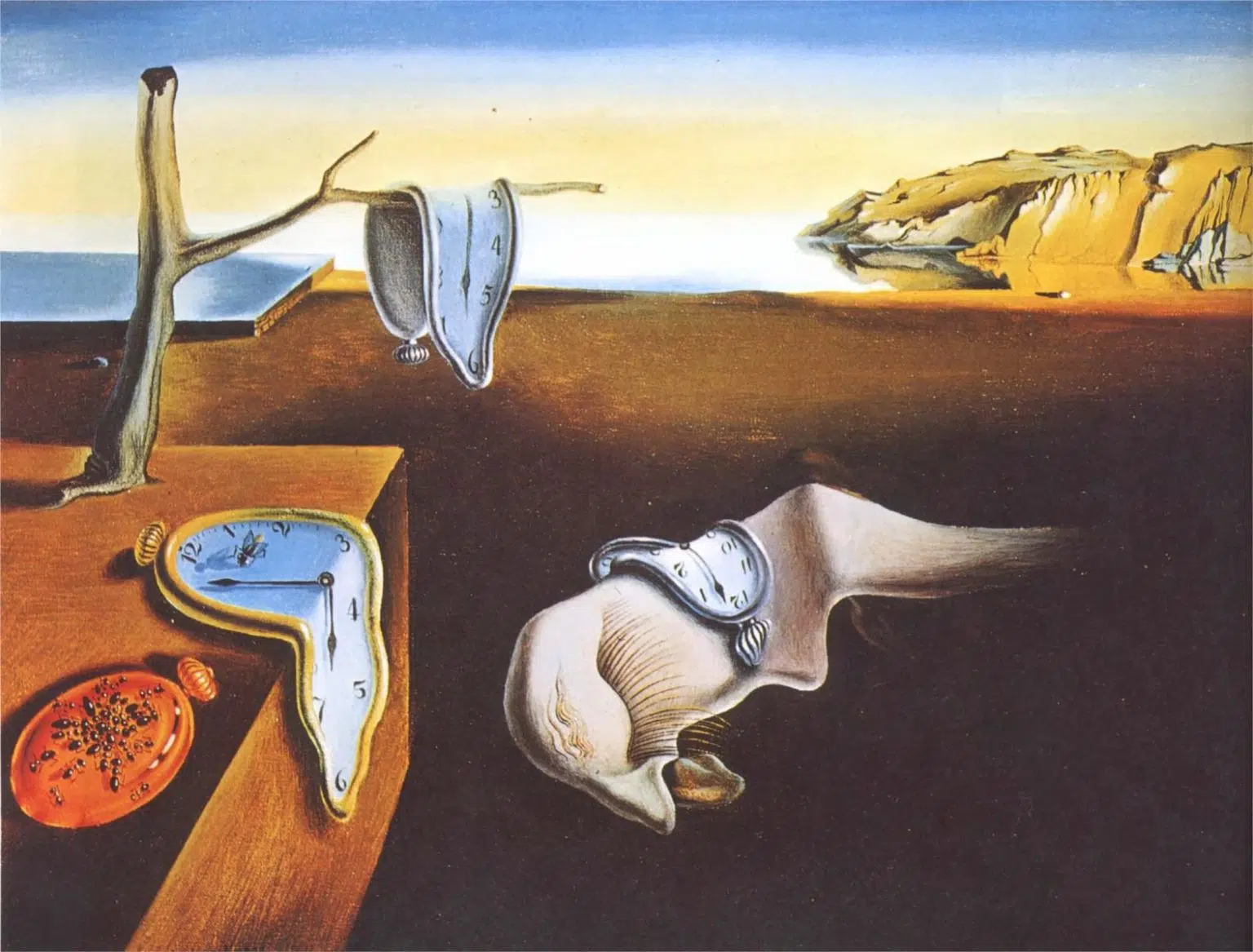
La persistance de la mémoire – Salvador Dali 1931
Back to the future
So, have we lost our memory? Or perhaps we never had it… No matter: 2024 is the perfect opportunity to (re)discover this profile-so contemporary, as we will see-of the “classic” Bordeaux, as some are already calling it, with added technical precision… And that’s putting it mildly. One of the characteristics of this kind of vintage is grapes that are both fragile and full of promise. Cool-headedness, rigor, mastery, and a certain restraint-this is what is meant by “technical precision.” And that’s not all. Under such circumstances, it’s hardly surprising that the quality of the 2024s is variable, with the mediocre rubbing shoulders with the excellent (again, we have short memories…). The great terroirs have spoken, as have the technical and human resources deployed to make the most of the year.
First, the great terroirs. Often associated with quality, great terroirs are also historically the earliest, most prolific, and most consistent. These characteristics mattered when it came to treating, harvesting, sorting, bleeding tanks, or discarding certain lots after vinification.
Next, the technical means. Density sorting, R-Pulse, and other high-performance but costly tools have undeniably added extra precision to the wines’ structure. Equally decisive, microbiological monitoring of musts and wines has preserved-or even corrected-the clarity and aromatic brilliance of wines during aging.
Finally, human resources. They are at the heart of every château’s success, from the humblest to the most prestigious. The commitment and self-sacrifice of the teams contributed to the vintage’s unexpected success. Great terroir or not, technical means or not, these men and women made the 2024 vintage. A fine example of social engagement within companies often maligned by our leaders.
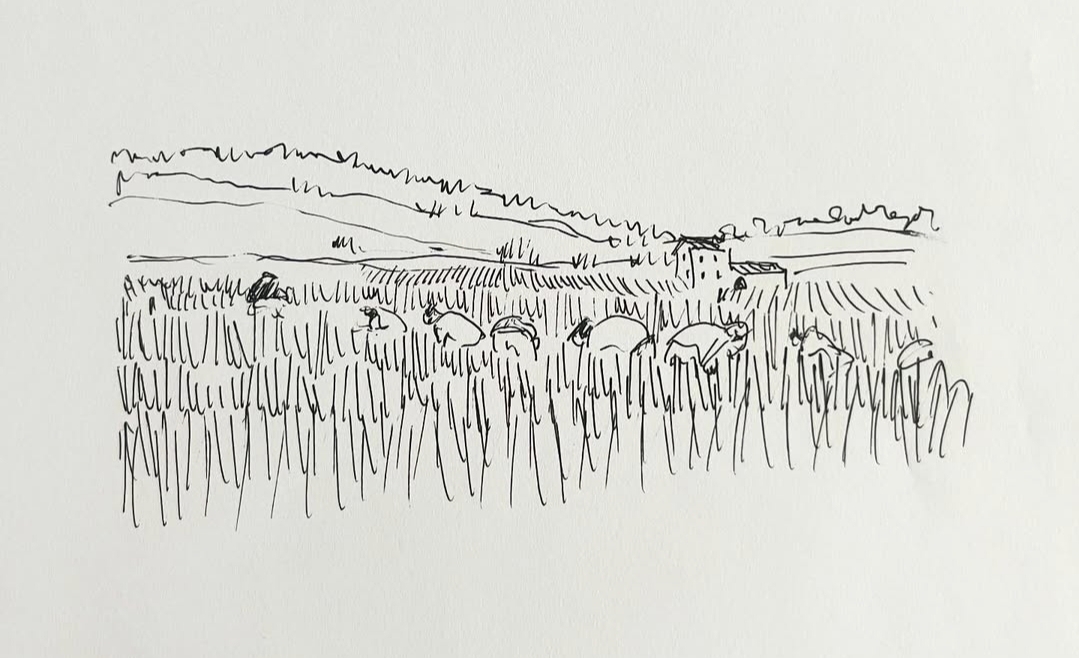
Drawing from Violeta Desvignes for the book "Le Temps d’un vin" – Olivier Borneuf, l’Harmattan Editions
The futility of numbers and the illusion of facts?
Although there can sometimes be a gap between the perception of the climate and the reality of tasting, objective data confirm that 2024 was indeed a particularly rainy year. That said, at Tulipe Rouge, we taste first and try to understand the vintage afterward. Why? Because numbers mean little unless filtered through contextual analysis. For example: from October 2023 to October 2024, Gironde recorded more than 1,600 mm of rain on average-the equivalent of two years! As oenologist Thomas Duclos of Oenoteam wryly notes: “Whether it’s 1,200 or 1,600 mm, it doesn’t matter: when the vase is full, it’s full; you can keep pouring water, but it won’t fill the vase any further. […] At some point, [the soils] reached their maximum water-holding capacity, and the rest ran off into the ditch.”
Another bias in reading the vintage: the key events, often reinforced by infographics worthy of a cartoon, which does nothing to help understand the year. For example: a mild and very rainy winter, a cool and wet spring, uneven flowering, historic mildew pressure, and a stormy September. After reading this, you might legitimately wonder if tasting is even necessary. But this is to forget other key facts. Among others: a hot summer, without excess, with low rainfall, favoring the synthesis of aromatic compounds and good phenolic ripeness. Lastly, let us recall once more the essential: the work of men and women throughout the season! The patience and composure of decision-makers to achieve the right ripeness and, whenever possible, drastic sorting in the vineyard and cellar (manual, density, optical, bulk sales, etc.).
As David Suire, managing director of Château Larcis Ducasse and Château Laroque, puts it: “There are two ways to look at a vintage: either you focus only on the difficulties and pitfalls that had to be overcome, or you look at the positives that the winemakers made the most of, and that make the vintage unique.” We naturally lean toward the second option. Now, to the wines.
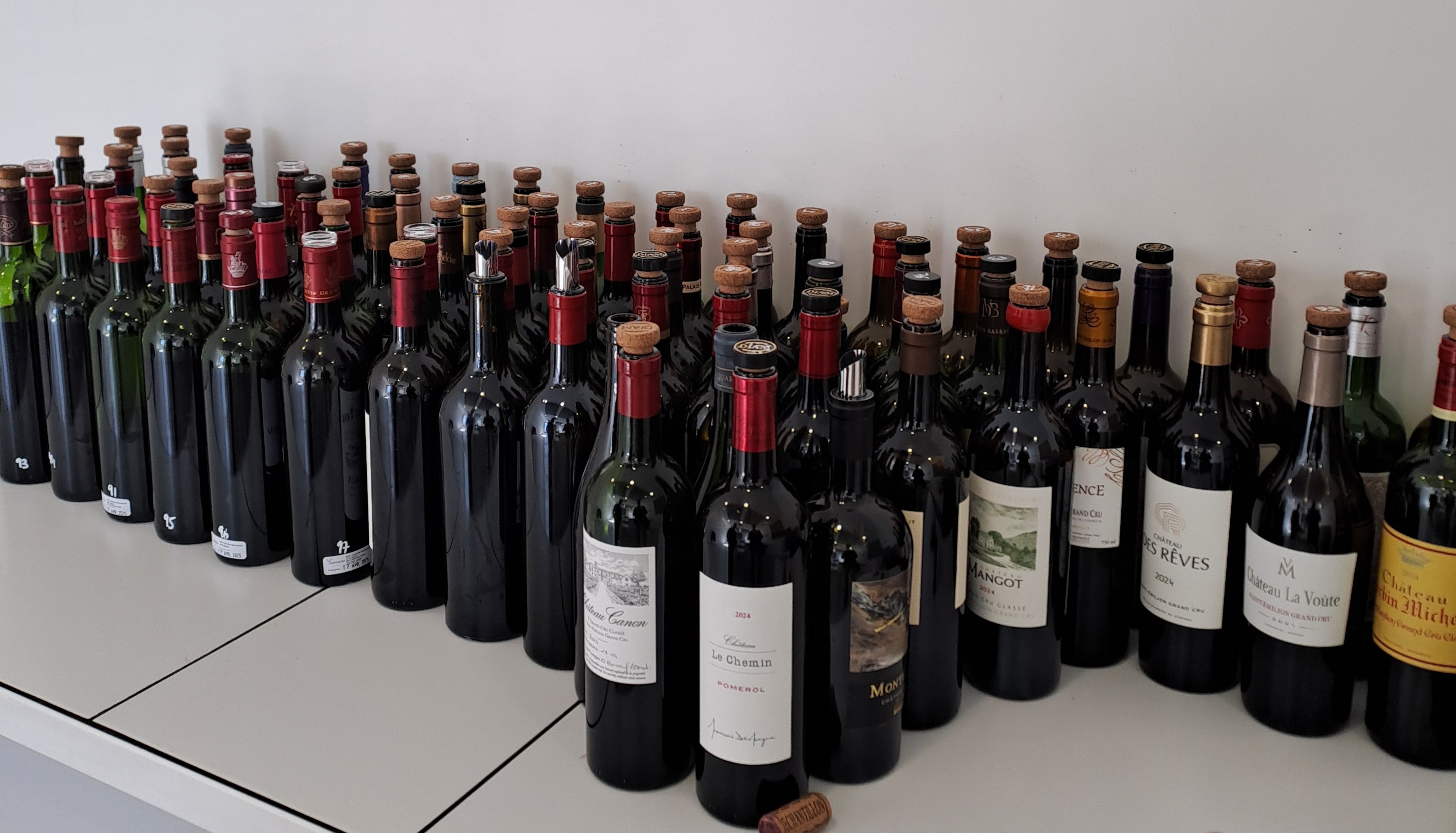
The 2024 Red Phenotype
For many of our peers, 2024 is necessarily “inferior” to the last two vintages, 2022 and 2023. It cannot be otherwise. We respect this position, especially since the arguments are indisputable: 2024 does not have the power or breadth of its two predecessors.
From our point of view, 2024 cannot be compared to 2022 and 2023. Quite simply because it has specific strengths that the latter lack, and it shows no weakness or flaw that would make it “inferior” by default. In other words, 2024 is not a vintage defined by a “marker” that would make it comparatively “inferior,” even among the best. If it lacks the power of the last two vintages, it is not systematically thin or vegetal. It proudly defends its strengths in a style with no equivalent, which Guillaume Thienpont of Vieux Château Certan modestly calls “classic.” Here’s why.
The Pluses
Moderate alcohol.
Few wines exceed 13% alcohol, making them pleasant and lively to taste. The aging is also less marked because alcohol’s extracting power is lower. The tannins are less dried out by alcohol and do not need to be “coated” by wood or other techniques that would diminish the purity of the material’s expression. The flip side is a greater demand for precision in the expression of the wines, particularly in tannin extraction and mouthfeel definition.
Pronounced freshness.
Whether analytically higher or simply more perceptible, acidity (and pH) contributes to this dynamism on the palate, highlighting the aromatics and sharpening the structure (tannins and texture).
A vibrant alcohol/acidity balance.
This inevitably leads to a more streamlined, elongated mouthfeel, which can be wrongly interpreted as a lack of substance. This less demonstrative but more elegant profile also echoes a lighter aromatic expression, often more floral, and creates a remarkable sense of harmony between smell and taste.
Aromatic complexity.
Despite budburst being in line with the decade’s average, the harvest was late-later than 2023. A long season always increases complexity. Both in refining tannins and shaping the palate, this “long” maturity favors finesse. It also favors fresh, delicate, and bright aromas, often characterized by florals: violet, peony, iris, jasmine, orange blossom-some bouquets were truly enchanting! Some striking figures illustrate this long (and thus slow) maturation: the average maximum temperature in September was about 2°C below normal, despite short periods above 25°C. These temperatures contrast sharply with the very high values recorded in September 2022 and 2023. In this century, only 2017, 2015, 2008, and 2001 have seen September averages so low!
Phenolic maturity.
If there’s a decisive point in 2024, it’s the summer break from mid-July to late August, which allowed for refined phenolic maturity. Contrary to expectations, the 2024s have a very good tannic structure, often rich in condensed tannins (skin and seeds): the best will age harmoniously.
Pyrazine.
The vine’s significant vegetative growth, due to heavy rainfall, favored the accumulation of IBMP (isobutylmethoxypyrazine, the molecule responsible for green bell pepper aroma) in the grape berries. However, IBMP concentrations at harvest were, in most cases, below the olfactory detection threshold (15 ng/L). Again, an unexpected gift given the year!
That said, despite the relatively low concentration, vegetal notes may be perceptible in some lighter wines. But their perception is paradoxically the result of overly diluted harvests (e.g., grapes grown on hydromorphic soils) rather than a lack of ripeness. It can also result from certain winemaking techniques used to concentrate wines, which concentrate both the good and, inevitably, the bad…
Finally, a more delicate hypothesis regarding our peers searching for IBMP in their tastings. Faced with this wine profile, all critics, ourselves included, look for what they are supposed to find… In 2024, the first thing to “sense” was the vegetal note (then possibly mildew and botrytis)! To the point that tasters may have forgotten the essential: a scent is the sum of several scents. Earlier, we mentioned the floral profile of some bouquets, notably orange blossom. We could also have mentioned the citrus notes present in many red wine samples. It is interesting to remember that these two pleasant aromas contain low concentrations of IBMP! To quote from the book “Le temps d’un vin” written by yours truly: “Analytical tasting helps us understand, but certainly not to claim that we have understood the wine.”
The Minuses
If 2024 must have a weakness, it is its heterogeneity. Most châteaux, from Bordeaux to the classified growths, managed to add density to the mid-palate and round out sometimes fleeting finishes, but some of the vineyard failed to concentrate grapes that were too diluted at harvest. The task was arduous, and decisions were often constrained by insufficient yields to sort, bleed, or concentrate, unavailable staff at harvest time, unfavorable grape varieties, economically impossible risks, etc. The causes, many and sometimes cumulative, made the challenge nearly insurmountable. Let us recall, incidentally, that berry size*** more than agronomic yield is the source of must dilution. Low yields often simply reflected crop loss, mainly due to coulure. Paradoxically, there were even compensation phenomena in the vine in response to low yields, which amplified berry swelling!
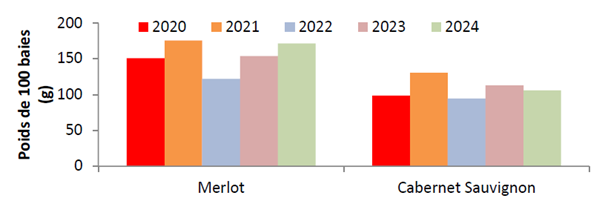
Millésime 2024 à Bordeaux - Pr Laurence GENY, Elodie GUITTARD, Dr Valérie LAVIGNE et Pr Axel MARCHAL Institut des Sciences de la Vigne et du Vin de l’Université de Bordeaux
Mildew and botrytis had negative consequences, not so much on yields (mainly due to coulure and brown rot on previously contaminated plots), but on the clarity of the wines. Again, the demand for precision depended on many factors: the resources of each estate and yields, themselves determined by the work carried out in the vineyard. Some wines are marked by "dry" tastes or dulled aromas, sometimes reminiscent of candied tomatoes or ketchup.
On the microbiology side, "Bretts"**** crashed the party. Truthfully, they are there every year. But when the material resembles lace, it's more complicated to tolerate them, especially when the price of the bottle is high. The demand for precision in this area was paramount to benefit from the advantages of the year - and will have to be just as important for the years to come...
In essence, Guillaume Thienpont is right: 2024 is a "classic." But with the demand for precision of our time, which, as in 2022, leads to more flattering definitions of youth – not merely “easy,” as is sometimes written. Heterogeneity, for its part, is consubstantial with this style of wine, imbued with class and finesse, which relegates the pursuit of power to a rearguard action.
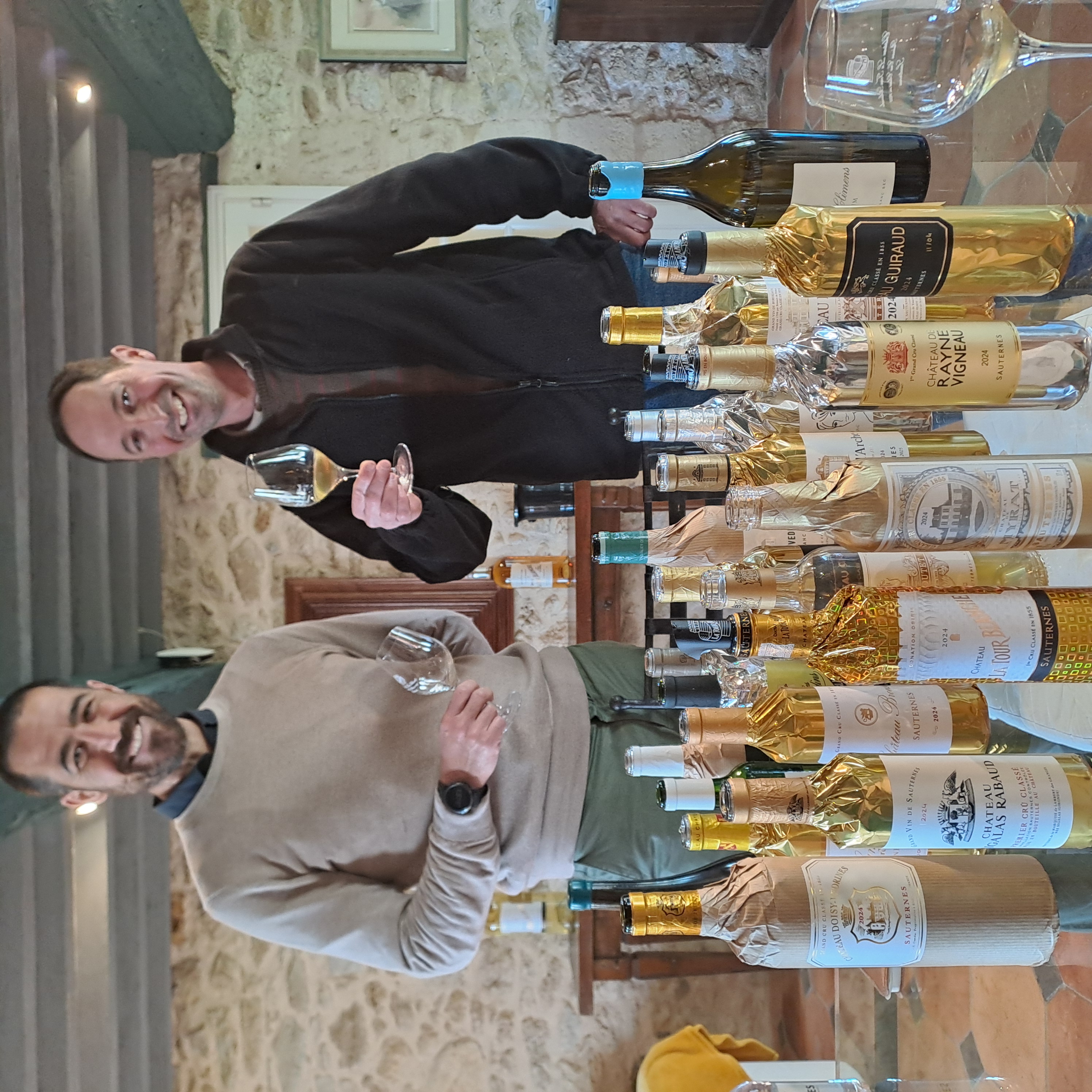
Miguel Aguirre et Philippe Pelicano (Château La Tour Blanche)
The 2024 White Phenotype
If the analysis of the vintage has so far focused on the reds, it is because they alone constitute the trending barometer of the vintage. However, it is the whites, both dry and sweet, that have probably given the most spectacular results. A long season favorable to the development of aroma precursors, little excess heat during the summer allowing the conservation of a good level of acidity, a sanitary state under control in most producers, a fractionation of the juices "à la champenoise" to avoid potassium surges (synonymous with a drop in total acidity) and the risks of dilution: these are, in a few words, the ideal conditions for intense, pure, and sharp whites! From the Médoc to the Libournais, via the Graves, Sauternes and Entre-Deux-Mers, there are many successes and at all price points. That being said, we note a preference for wines born on limestone and clay-limestone soils, which have mitigated the risks of dilution resulting from rainy episodes.
On the sweet wine side: purity, elegance, and dynamism thanks to less rich but perfectly botrytized grapes: a delight! From the end of the summer, the grapes were ripe, and the sanitary condition was satisfactory. On August 29th, 100 mm of rain quickly established botrytis cinerea. On September 12th, a first dry period synonymous with a first sorting. Freshness and radiance of a perfectly botrytized grape completed by a second sorting in early October, richer and more powerful, which constitutes the heart of the cuvée of future sweet wines. In the second half of October, a third sorting will complete the harvest with the need, this time, to sort the grapes for sanitary reasons. For once, reds and sweet wines agreed in prioritizing balance and refinement!
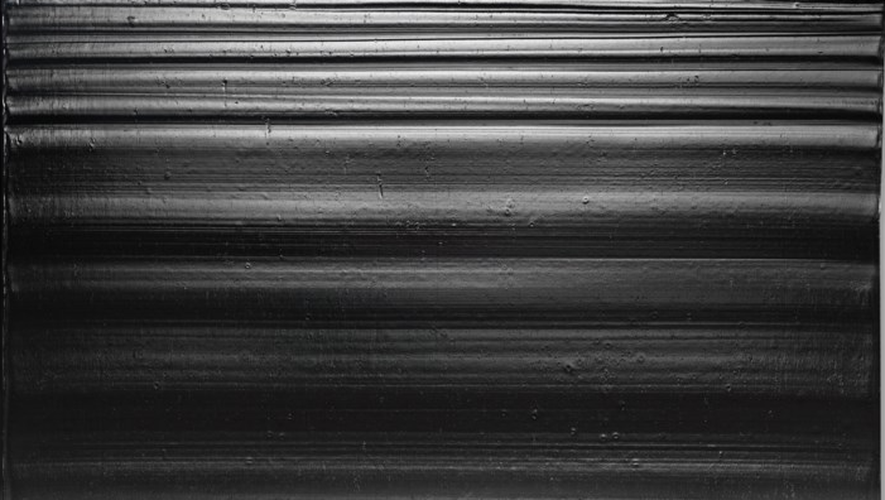
Outrenoir - Pierre Soulages
Vintage of the Outrenoir
We love the 2024s. The reds, the whites, and the sweet wines. We think that the most successful will be delicious in their youth, wonderful at their peak. Finally, we believe that any comparison with the 2022s and 2023s is vain if not futile. So, you will not be surprised to find in our 2024 En Primeur report (reserved for subscribers) scores that reflect both our enthusiasm and the heterogeneity of the vintage. In addition to the scores, comments, which have never been so important to spark your curiosity. As for the release prices, we of course always hope for better, especially when the qualitative offer, in the context we know, is no longer limited to Bordeaux.
To conclude, a quote: "Beyond black, a light reflected, transmuted by black. Outrenoir: black which, ceasing to be, becomes an emitter of clarity, of secret light. Outrenoir: a mental field other than that of simple black." How can we not see in this definition of Outrenoir by Pierre Soulages himself another definition, that of this vintage born in the darkness of an era and the gloom of a climate? In the blackness of a grape, the brilliance of a fragrant, vibrant, and playful wine? Or, better yet, the reflections of a new aesthetic other than that of simple power? 2024 divides because it questions our relationship with Bordeaux and the way we understand each vintage. Let us forget for a moment the name of which this 2024 is the wine and concentrate exclusively on its tasting. With a minimum of objectivity, it is not very difficult to perceive the brilliance of an avant-garde that we will talk about again in a few years. Happy discoveries.
Olivier Borneuf
2024 En Primeur Report available next week!
(subscribers only)
Not a subscriber yet? Click HERE.
*Density sorting allows an automated selection of the ripest and healthiest berries. In a normal year, about 5% of the harvest is discarded. In 2024, 15% to 20% of the harvest was rejected...²
**R-pulse is a pumping-over system without mechanical action, favoring a more qualitative extraction of tannins.
***The weight of Merlot berries measured at harvest is close to that of 2021 and among the highest of the last 5 vintages.
****Natural spoilage yeasts causing tastes of stables, ink, or gouache depending on the case.
